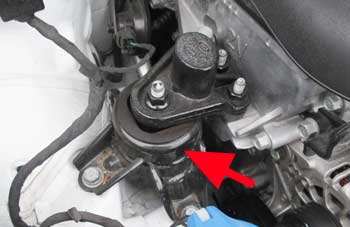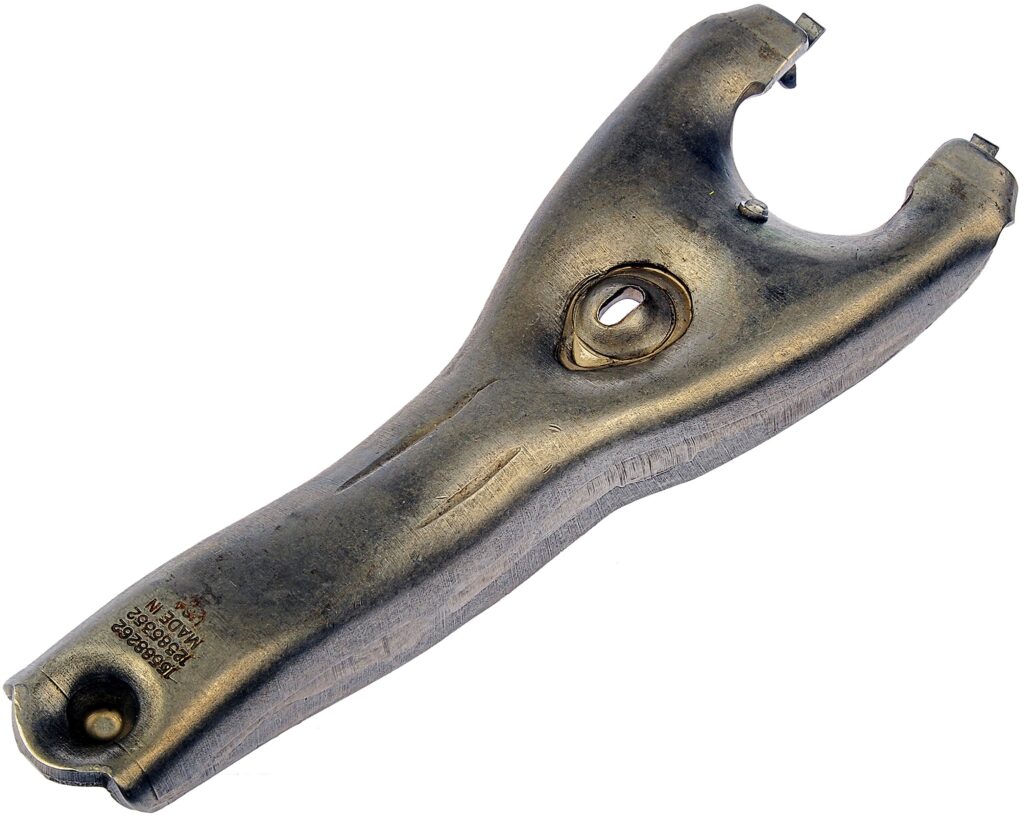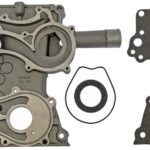
Ford Focus Clutch Fork Replacement: The Complete DIY and Expert Guide

When your Ford Focus clutch fork starts to fail, it can feel like your trusty ride has lost its rhythm. The clutch pedal suddenly feels odd — maybe soft, maybe stiff — and you sense that the gears aren’t engaging the way they used to. But don’t panic. Whether you’re a weekend mechanic or just a curious driver, this guide walks you through everything you need to know about replacing the clutch fork on a Ford Focus — from symptoms and tools to step-by-step instructions and post-replacement tips.
Let’s dive in and make sense of what’s happening under the hood.
- Understanding the Clutch Fork’s Role
- Recognizing a Failing Clutch Fork
- Why Clutch Forks Fail in Ford Focus Models
- Tools and Equipment You’ll Need
- Step-by-Step Ford Focus Clutch Fork Replacement
- Common Mistakes to Avoid During Replacement
- How Much Does a Ford Focus Clutch Fork Replacement Cost?
- Post-Replacement Tips for Longevity
- Troubleshooting After Replacement
- When to Seek Professional Help
- Wrapping It Up – A Stronger Clutch, A Smoother Ride
- FAQs About Ford Focus Clutch Fork Replacement
Understanding the Clutch Fork’s Role
Before we talk replacement, we need to appreciate what the clutch fork actually does.
The Unsung Hero of the Clutch System
The clutch fork might not get much spotlight, but it’s a vital player. Its main job is simple yet essential — it transfers the motion from your clutch pedal to the release bearing, disengaging the clutch so you can change gears smoothly.
Think of it as the “messenger” between your foot and your gearbox — when it’s damaged, the message doesn’t get delivered properly.
How It Works
When you press the clutch pedal:
- The clutch master cylinder pushes fluid to the slave cylinder.
- The slave cylinder moves the clutch fork.
- The fork pushes the release bearing, which disengages the clutch disc from the flywheel.
It’s a neat little dance that happens every time you shift gears — until something goes wrong.
Recognizing a Failing Clutch Fork
A bad clutch fork doesn’t just snap one day — it sends warning signs. Paying attention early can save you a full transmission teardown.
Common Symptoms
Here’s what you might notice:
- Difficulty engaging gears, especially first and reverse.
- A soft or spongy clutch pedal that feels inconsistent.
- Grinding noise when pressing the clutch.
- Pedal not returning fully after being depressed.
- Vibration or shuddering when shifting.
Visual Inspection Clues
If you pull the transmission or peek through the inspection port, look for:
- Worn or bent fork arms.
- Cracks around the pivot ball area.
- Uneven contact marks on the release bearing.
If you spot any of these, it’s replacement time.
Why Clutch Forks Fail in Ford Focus Models
It’s not always driver error. The Ford Focus, especially models from 2000 to 2011, has a known pattern of clutch-related wear due to a combination of design, materials, and driving habits.
Material Fatigue and Design Flaws
Over time, the fork can bend or crack at the pivot point, particularly in Focus models with manual transmissions that see a lot of stop-and-go traffic.
Contributing Factors
- Riding the clutch pedal (keeping it partially pressed).
- Incorrect clutch installation causing misalignment.
- Weak or broken pivot ball leading to uneven stress.
- Worn-out release bearing adding excess pressure to the fork.
So even if your clutch was replaced recently, a worn fork can undo that repair fast.
Tools and Equipment You’ll Need
Let’s talk preparation — because clutch fork replacement is no small task. You’ll need a mix of basic and specialized tools.
Tool Checklist
- Floor jack and jack stands
- Transmission jack (or a sturdy friend!)
- Socket and wrench set
- Screwdrivers and pliers
- Pry bar
- Torque wrench
- Clutch alignment tool
- Replacement clutch fork
- Clutch release bearing
- Safety glasses and gloves
Optional (But Helpful) Extras
- Service manual for your Focus model year
- Thread locker for securing bolts
- Anti-seize lubricant for pivot points
Preparation saves frustration — trust us on that one.
Step-by-Step Ford Focus Clutch Fork Replacement
Here’s where the magic (and the elbow grease) happens. Let’s walk through the process carefully.
You may be interested in reading DIY Guide: Replacing the Clutch in a Fiat 500
DIY Guide: Replacing the Clutch in a Fiat 500Step 1 – Disconnect the Battery
Always start safe. Disconnect the negative battery cable to avoid electrical mishaps.
Step 2 – Raise and Support the Vehicle
Use your jack to lift the front of the car securely. Support it on jack stands and make sure it’s rock-solid before crawling underneath.
Step 3 – Remove the Transmission
This step is the toughest. You’ll need to:
- Remove the air intake assembly.
- Disconnect shift linkage and speed sensors.
- Unbolt the starter motor.
- Drain transmission fluid.
- Unbolt and carefully lower the transmission with a jack.
Patience pays off here — a rushed move could damage sensors or mounts.
Step 4 – Access the Clutch Fork
Once the transmission is out, you’ll see the clutch assembly. Remove the release bearing, then you’ll spot the fork secured on the pivot ball.
Step 5 – Remove the Old Fork
Inspect it closely as you remove it. Take note of wear patterns — they can hint at other underlying problems (like a misaligned pressure plate).
Step 6 – Install the New Clutch Fork
Grease the pivot ball and contact points lightly. Fit the new fork securely, ensuring the retaining spring clips properly into place.
Step 7 – Reinstall Components
Reverse your disassembly steps:
- Refit the release bearing.
- Align and reinstall the transmission.
- Reconnect all wiring, linkages, and mounts.
- Refill transmission fluid.
Step 8 – Test the Clutch
Before hitting the road, press the clutch pedal several times to confirm proper engagement. If it feels smooth and consistent — congratulations, you’ve nailed it.
Common Mistakes to Avoid During Replacement
Even seasoned mechanics can slip up. Here’s what to steer clear of:
Not Replacing the Release Bearing
Replacing the fork but keeping an old bearing? That’s asking for trouble. Always replace both together.
Forgetting to Lubricate
A dry pivot point causes premature wear. A dab of high-temp grease keeps movement smooth.
Misaligning the Transmission
If the transmission isn’t perfectly aligned during installation, you’ll stress the clutch system — leading to uneven wear and possible failure.
Overlooking the Pivot Ball
The pivot ball wears too. If it’s worn or loose, replace it alongside the fork.
How Much Does a Ford Focus Clutch Fork Replacement Cost?
The price tag depends on whether you DIY or hire a pro.
DIY Cost Estimate
- Replacement clutch fork: $40–$100
- Release bearing: $30–$60
- Miscellaneous supplies (fluids, grease): $20–$40
Total DIY cost: Around $100–$200 — not bad for a weekend fix.
Professional Replacement
Shops may charge $700–$1,200, mainly due to labor. Most of the work involves removing and reinstalling the transmission.
You may be interested in reading DIY Guide: Replacing the Clutch in a Fiat 500
DIY Guide: Replacing the Clutch in a Fiat 500 How to Change the Oil and Oil Filter in Your Fiat 500
How to Change the Oil and Oil Filter in Your Fiat 500If you’re handy with tools and patient, the DIY route can save you hundreds.
Post-Replacement Tips for Longevity
You’ve done the hard part. Now keep your new clutch fork — and clutch system — in great shape.
Break-In Period
Drive gently for the first 300–500 miles. Avoid heavy loads or aggressive shifting.
Routine Inspection
Every oil change, check for clutch fluid leaks and listen for unusual pedal noises.
Smart Driving Habits
- Don’t rest your foot on the clutch pedal.
- Engage gears fully before accelerating.
- Avoid holding the clutch halfway in traffic.
These small habits make a massive difference over time.
Troubleshooting After Replacement
If things don’t feel right post-replacement, don’t ignore it.
Stiff Clutch Pedal
Likely caused by lack of lubrication or a misaligned fork. Recheck pivot contact.
Grinding Noise
The release bearing may not be seated correctly — or the fork could be mispositioned.
Clutch Slipping
Could point to an incorrectly installed clutch disc or contaminated surfaces.
When to Seek Professional Help
We’re all for DIY confidence, but sometimes, it’s best to bring in the pros.
Get Expert Help If
- You hear persistent grinding after replacement.
- The clutch pedal sticks or doesn’t return.
- Gear engagement feels inconsistent.
Transmission work can get tricky fast, and an experienced mechanic can diagnose hidden issues you might miss.
Wrapping It Up – A Stronger Clutch, A Smoother Ride
Replacing the clutch fork on your Ford Focus might seem intimidating, but with patience, preparation, and precision, it’s absolutely doable. This small metal lever plays a mighty role — and once it’s renewed, your Focus will feel responsive, smooth, and ready to hit the road again.
We’ve walked through the signs, tools, steps, and pitfalls. Now, all that’s left is to get your hands dirty and bring that clutch back to life.
FAQs About Ford Focus Clutch Fork Replacement
1. How long does it take to replace a clutch fork?
For experienced DIYers, about 6–8 hours. For first-timers, set aside a full day.
2. Can I drive with a bad clutch fork?
Not safely. You risk damaging the clutch and transmission further.
3. Do I need to replace the clutch too?
If the clutch assembly shows signs of wear, yes. It’s smart to replace both while the transmission is out.
4. Is clutch fork replacement the same across all Focus models?
Not exactly — dimensions and mounting can vary slightly between years and engines, so always match the part to your VIN.
You may be interested in reading DIY Guide: Replacing the Clutch in a Fiat 500
DIY Guide: Replacing the Clutch in a Fiat 500 How to Change the Oil and Oil Filter in Your Fiat 500
How to Change the Oil and Oil Filter in Your Fiat 500 Replacing the Timing Cover Seal on a Fiat 500 TwinAir Engine
Replacing the Timing Cover Seal on a Fiat 500 TwinAir Engine5. What causes repeated clutch fork failure?
Usually misalignment, worn pivot points, or aggressive clutch habits. Addressing these prevents repeat issues.
If you want to know other articles similar to Ford Focus Clutch Fork Replacement: The Complete DIY and Expert Guide you can visit the category Maintenance.
Deja una respuesta






More content of your interest